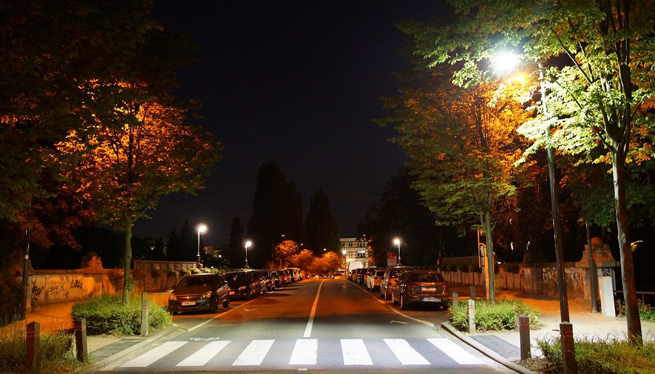Laborelec, part of ENGIE Research & Innovation, is further widening its research into how biodiversity is affected by public lighting, conducting collaborative projects in Jette and Turnhout, Belgium. Laborelec experts, in collaboration with CRIGEN, are also working on a software tool designed to help authorities and providers plan public lighting with social needs, biodiversity, and energy performance in mind.
November 2023

Current knowledge about the negative impact of street lighting on biodiversity is still limited. That’s why Laborelec’s lighting competence centre has been engaging for several years in a series of measurement programmes with a number of partner organizations. These include Synergrid, the body representing Belgian electricity and gas network operators, the nature preservation organization Natagora, the French not-for-profit environmental association Noé, and CRIGEN.
Different hues, different bat behaviours?
In the Brussels commune of Jette, Laborelec continued to investigate how bat populations behave depending on the type of artificial lighting found in their habitat. Bats are particularly useful for this type of research because the range of bat species is a good indicator of an area’s biodiversity, including the presence of a variety of insects and the likelihood that nocturnal hunters such as owls and hawks find prey.
Laborelec experts investigated how bat populations move around in areas where lighting has different colours and illuminance levels. Tests were carried out with lighting in the red, orange, neutral white, and warm white spectra, using the Dynamic Lighting Assessment (DyLA) tool developed by Laborelec. Different ultrasound recorder types (mobile and static) were used to identify which species of bats were present in which locations and to relate this information to the lighting characteristics.
Turning off the lights
Similarly, on the outskirts of the town of Turnhout, Laborelec experts have been measuring and analysing the impact on bat presence and activity when public lighting is turned off in some areas for several nights. The investigation is ongoing and will be extended to other Turnhout neighbourhoods.
Widening the scope
The various projects demonstrate that the research programme is widening its scope by investigating how biodiversity adapts when different procedures and equipment are employed, and by carrying out tests in a range of locations, including urban and peri-urban.
The tests also investigated the precise impact of the different components of public lighting, including colour and hue, intensity, and positioning.